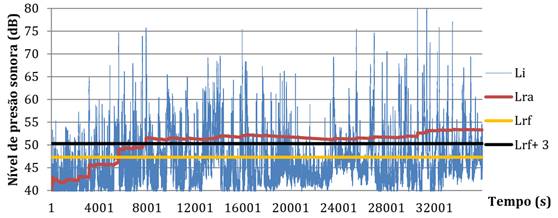Abstract
Noise pollution in cities derives from various sources, including aeronautical noise. Aircraft noise is a potential cause of discomfort for the general population. National and international standards use temporal metrics, obtained through the logarithmic mean of instantaneous measurements over a period. But there is still potential for discomfort even in places where those criteria are met, as reported in the literature, especially when an aircraft flies over the receiver. This researchstudy aimed to evaluate the application of temporal and maximum metrics in the quantification of sound pollution generated by a helipad. Seventy hours of measurement were performed following to the procedures of NBR 13368 (ABNT, 1995) and dose-response curves were used to evaluate the results obtained. The results indicate that when using temporal metrics, the normative evaluation criteria are met, even though there is potential for discomfort of 30% of the population. During the measurements, differences of about 30 dB between background noise and peak noise were observed during aircraft overfly with an average frequency of 12 min. The conclusion is that meeting the evaluation criteria based on time metrics does not guarantee the acoustic comfort of the population.
Keywords:
Noise pollution; Aircraft noise; Environment

 Thumbnail
Thumbnail
 Thumbnail
Thumbnail
 Thumbnail
Thumbnail
 Thumbnail
Thumbnail
 Thumbnail
Thumbnail
 Thumbnail
Thumbnail
 Thumbnail
Thumbnail
 Thumbnail
Thumbnail
 Thumbnail
Thumbnail
 Thumbnail
Thumbnail









